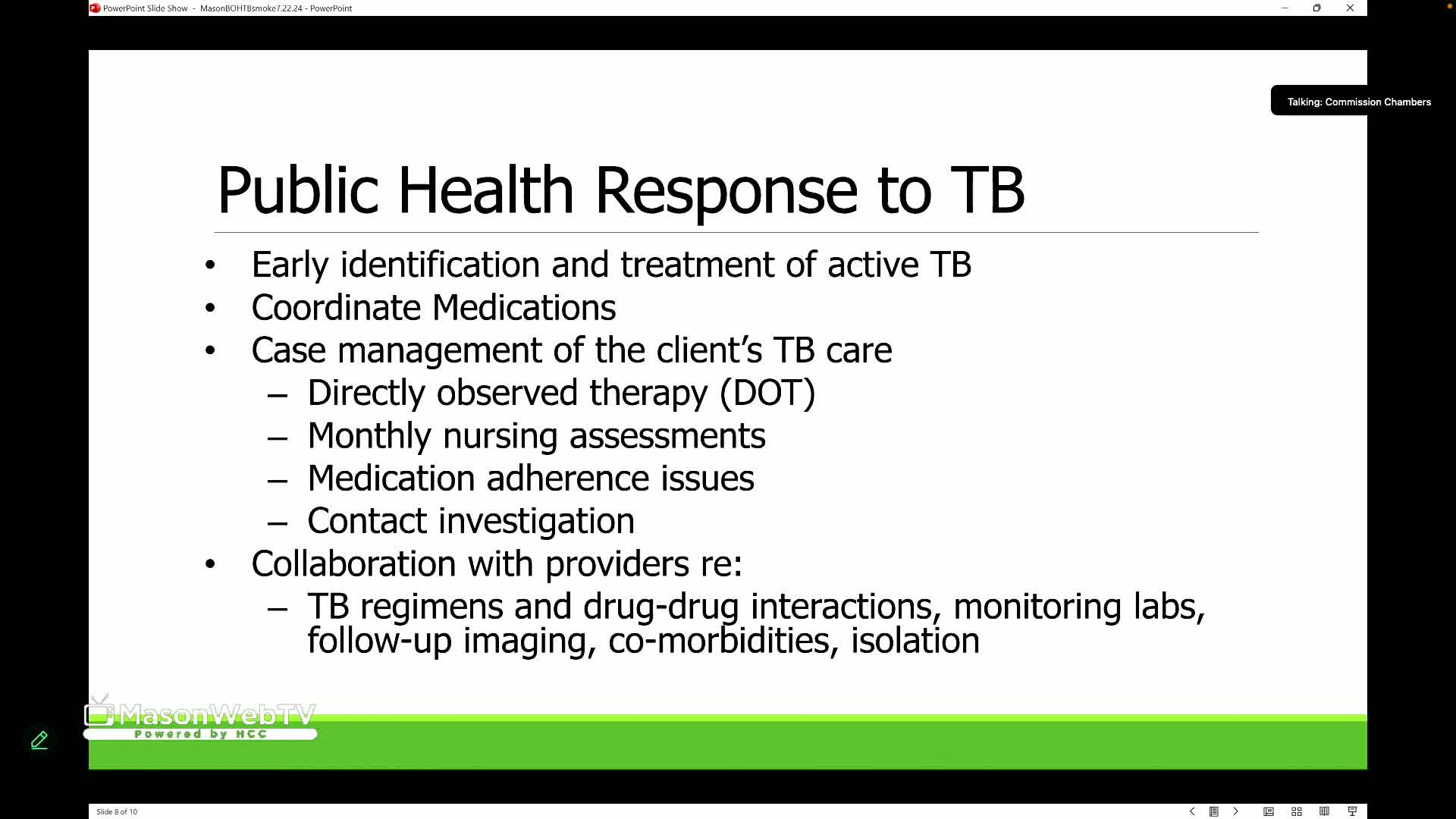Health Officials Tackle TB Treatment Challenges and Air Quality Risks
July 23, 2024 | Mason County, Washington

This article was created by AI summarizing key points discussed. AI makes mistakes, so for full details and context, please refer to the video of the full meeting. Please report any errors so we can fix them. Report an error »

In a recent government meeting, health officials discussed critical strategies for managing tuberculosis (TB) treatment and the impact of air quality on public health. The meeting highlighted the importance of directly observed therapy (DOT) as a cornerstone of TB treatment, emphasizing the necessity of monitoring patients to ensure adherence to their lengthy medication regimens, which can last from six to nine months and involve taking multiple pills daily.
Officials noted that non-compliance can lead to inadequate treatment and the development of drug-resistant TB strains, posing a significant public health risk. They also mentioned the integration of technology, such as video monitoring, to facilitate DOT while reducing the need for in-person visits.
The discussion also touched on air quality concerns, particularly in light of ongoing wildfires affecting the eastern side of the state. Officials referenced resources like airnow.gov for real-time air quality updates and stressed the importance of educating vulnerable populations, including those with pre-existing health conditions, about protective measures during poor air quality events.
Additionally, the meeting addressed logistical questions regarding TB testing locations and the coordination of care for patients, particularly those identified as contacts of active TB cases. Health officials expressed a commitment to improving communication and support for local pharmacists, who often serve as a primary resource for community health inquiries.
Overall, the meeting underscored the collaborative efforts among health departments, providers, and community resources to effectively manage TB treatment and respond to environmental health challenges.
Officials noted that non-compliance can lead to inadequate treatment and the development of drug-resistant TB strains, posing a significant public health risk. They also mentioned the integration of technology, such as video monitoring, to facilitate DOT while reducing the need for in-person visits.
The discussion also touched on air quality concerns, particularly in light of ongoing wildfires affecting the eastern side of the state. Officials referenced resources like airnow.gov for real-time air quality updates and stressed the importance of educating vulnerable populations, including those with pre-existing health conditions, about protective measures during poor air quality events.
Additionally, the meeting addressed logistical questions regarding TB testing locations and the coordination of care for patients, particularly those identified as contacts of active TB cases. Health officials expressed a commitment to improving communication and support for local pharmacists, who often serve as a primary resource for community health inquiries.
Overall, the meeting underscored the collaborative efforts among health departments, providers, and community resources to effectively manage TB treatment and respond to environmental health challenges.
View full meeting
This article is based on a recent meeting—watch the full video and explore the complete transcript for deeper insights into the discussion.
View full meeting
